Thailand is one of the most visited countries in the world. There will always be tourists in the country, but you may have heard of a burning season or smokey season where it may not be as pleasant, or even safe to visit.
Table of Contents
ToggleIn this article, you’ll learn what burning season is, when and where it happens, and if it is still worth it to visit during the smoky time period.
What is Smoky Season in Southeast Asia
Smoky season, burning season, dry season, are all names for the time period in much of Northern Southeast Asia where there is little rain.
The lack of rain causes a dry period where it is easy for fires to start. Much of the farmland in Thailand is in the North, and during this time, there are many wildfires, and man-made fires from farmers using a slash and burn method of agriculture.
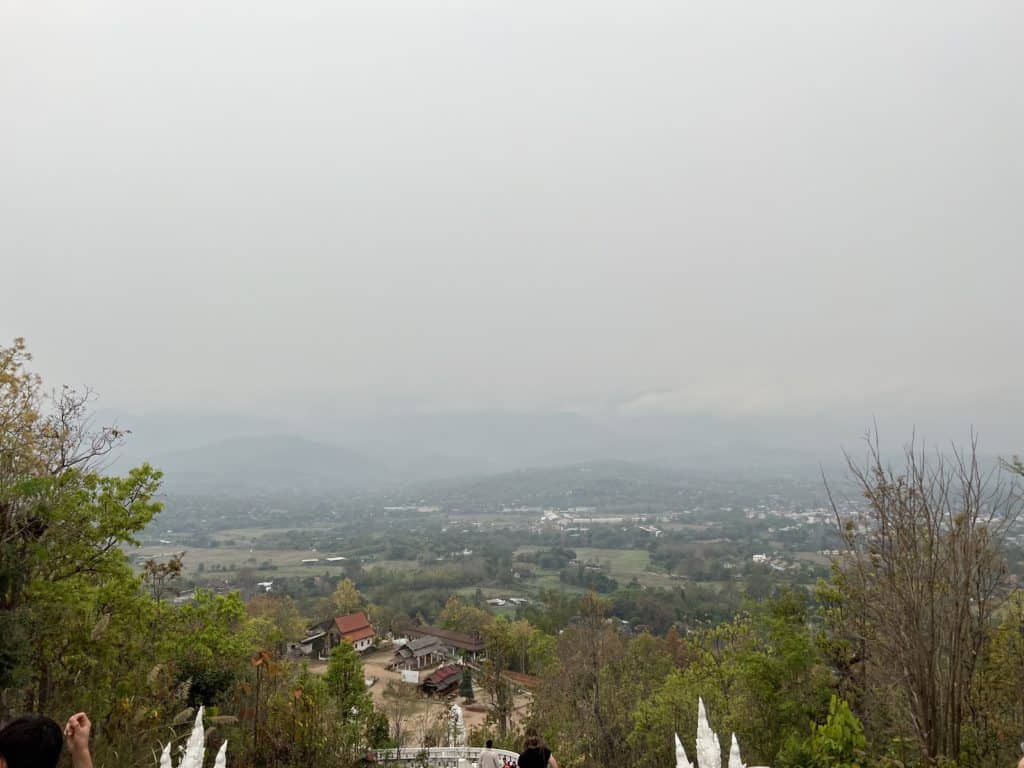
The slash and burn method is used by farmers in much of northern Southeast Asia, including Northern Thailand, Laos, and sometimes Cambodia and Northern Vietnam.
Malaysia also has a burning season, but during a different time due to different climates and seasons.
When is Burning Season in Thailand
Farmers still use the slash and burn method of agriculture to get rid of the old crops and prepare for the new harvest.
In northern Thailand and Laos, they generally slowly begin in January, really start in February, and the worst of the smoke tends to happen in March into April, before the rainy season starts.
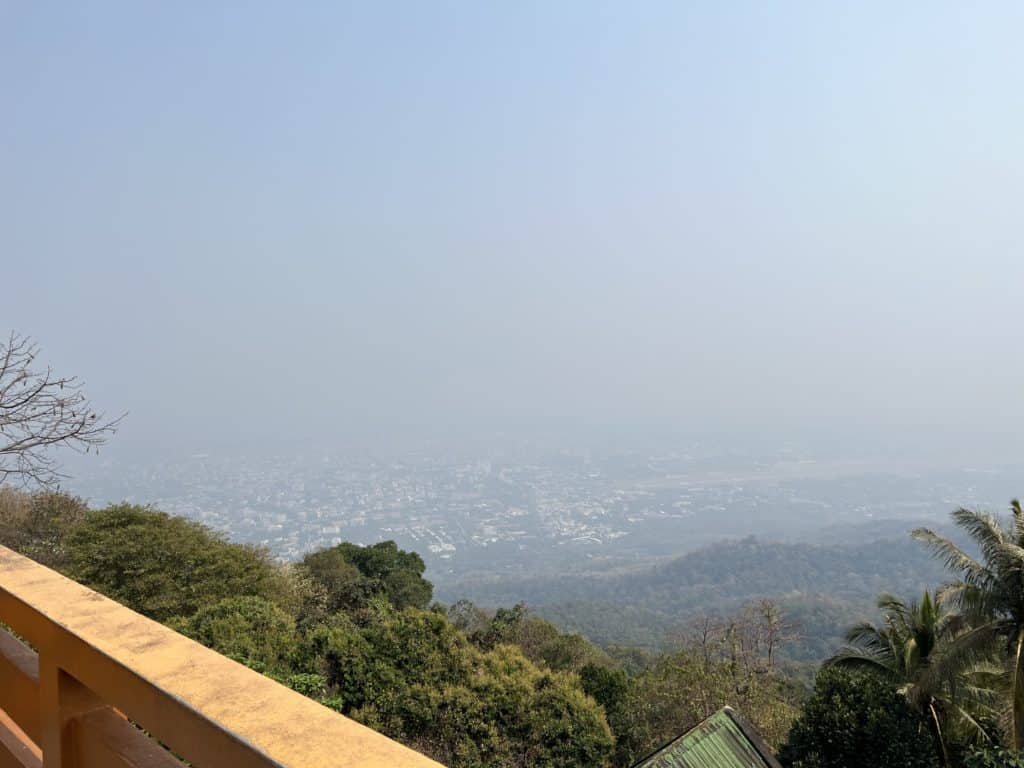
Bangkok is always a bit more polluted, due to being a big city with a lot of smog, but it becomes worse during the burning season, depending on wind direction.
The burning season has little to no effect on the South of Thailand.
Best time to Visit Thailand
November to January in Thailand
The best time to visit Thailand for the best weather is generally said to be November to January. This is when the rainy season has ended, the weather is not too hot, and there are no burnings that cause smokey or burning season yet.
If your main concern is traveling in the best weather, November to January will be the best time to visit Thailand.
For more budget-oriented travelers, the months of November, December, and January will be the most expensive due to the high demand of travel during the great weather conditions. Travel during the (Gregorian calendar) new year.
February to April in Thailand
For those that want to avoid the higher prices of November to January, the February to April season still has a lot to offer.
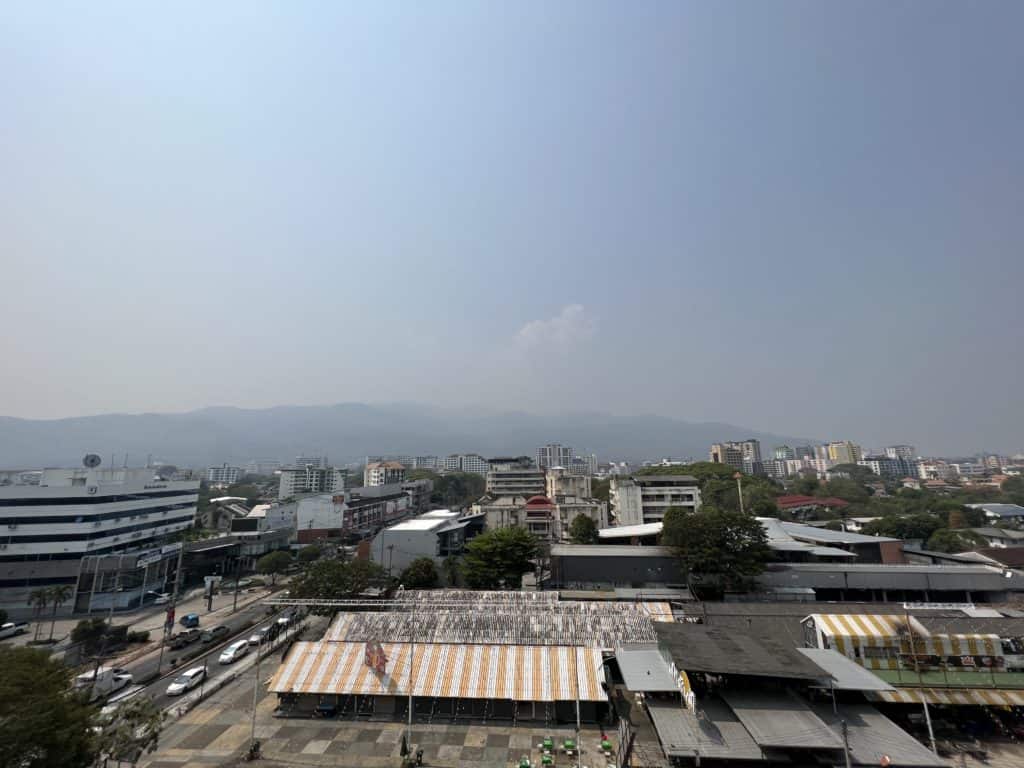
There is little rain, and a lot of sunlight during this season. There will be little worries about canceling plans due to rain or thunderstorms. When it does rain during this season, it usually comes in quick waves rather than long multi day storms.
Smoky burning season is during this time, but you can still visit the South of Thailand with no worries.
If you are doing a longer, multi month trip, you could visit Northern Thailand either before or after smokey season and stay in the south during this period to get the best of both worlds in terms of weather and affordability.
May to October in Thailand
May to October is considered rainy season in Thailand, and much of that region of Southeast Asia, including Laos, Cambodia, and Vietnam
Depending on how north or south you are in the area, peak rainy times will be different. In general, the worst of it happens around June to August in the North of Thailand, while the Southern Islands have it later, with the most rain usually occurring in October, especially for the Eastern Islands such as Koh Tao, Koh Phangan, and Koh Samui.
The rainy season also brings in large storms such as Typhoons and Monsoons, so watching the weather is important.
If budget is the most important thing to you, and you don’t mind being adaptive with plans, the rainy season can be the best time to travel.
Smoky Burning Season in Northern Thailand
The smoky or burning season in Thailand and Southeast Asia varies from year to year in intensity.
Over the last 10 years, it seems to only be getting worse, but there are certain years where there is more rainfall during the dry season that temporarily stops the burings, causing the smoke to dissipate.
For the 2023 season, the smog started quite early in February, with a few periods of rainfall that kept the smoke low for a few days at a time.
By March 2023 however, the smoke was at an all-time high with the city of Chiang Mai being ranked the worst for pollution at certain times.
When I visited Pai in March 2023, the first day had an AQI of over 300, and a PM2.5 of almost 300, which is considered a hazardous level.
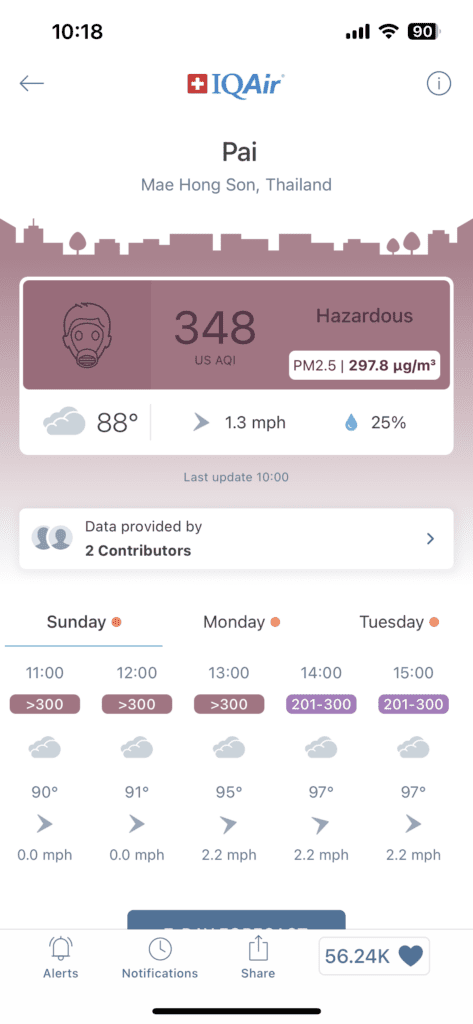
I got lucky and it rained the first night I stayed, which lowered the AQI to around 60-150 for the next week.
In terms of visibility, you will not get a clear view of the mountains during the burning season, or even 50 meters in front of you at certain times.
For health, the PM2.5 ratings are at an unhealthy to hazardous level for much of the season. Wearing an N95 or similarly rated mask can help filter the air to a healthy level when worn.
The air quality affects every individual differently. A high PM2.5 level will be unhealthy for everyone, but some people will not feel anything from the bad air quality, while others may have symptoms such as coughing, itchy eyes, mucus buildup and chest congestion, or even illnesses such as bronchitis and pneumonia.
I personally had a mild asthma as a child, but have grown out of it, and did experience a mucus buildup and frequent coughing in my first two weeks of being in the North of Thailand during smokey season.
After about two weeks, I stopped coughing and became used to the smog, but it is still unhealthy without a mask.
How to Track the Air Quality
There are many websites and apps that have a database of air indexes that are tracked and shared around the world.
The air index app that I use, and can recommend, is the “IQAir Air Visual” app. It gives the AQI, PM2.5, and PM10 for most cities, with multiple sources for many cities, as well as a map to look around a region and easily compare.
What is an AQI air index and a PM2.5
The AQI is an index that gives a quick overall view of the air quality in an area. Generally, an AQI of below 50 is clean, 50-150 is polluted but livable, +150 being unhealthy, and +300 being hazardous for health.
It is recommended to bring a minimum of an N95 mask when traveling to polluted areas. An N95 mask is supposed to filter out 95% of the particles in the air.
An R95 mask works like an N95 mask, but filters oil particles as well. There are many standards close to an N95 that can work, such as the R95, but it isn’t necessary.
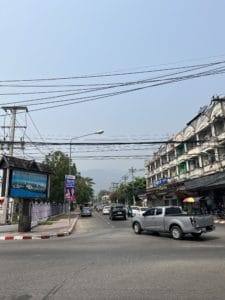
The AQI can give a good idea of how bad visibility may be due to smoke.
A PM2.5 rating is much more important when it comes to the safety of breathing in the smoky, polluted air.
This is because the PM2.5 is rated for how many bad particles are in the air that are small enough to make it past the human respiratory filtration and go straight into the bloodstream.
In terms of health, Thailand considers anything over a PM2.5 of 50 to be unhealthy.
Most foreigners visiting Northern Thailand either do not know of the unhealthiness of the smoke or are aware but still do not wear a mask.
Many expats and remote workers / digital nomads will flee the North of Thailand during the burning season.
A good number of Thais wear a mask, but many wear a regular medical mask that does not have an N95 or similar rating that will actually filter out the unhealthy PM2.5 particles.
Should you visit Thailand during Smoky / Burning Season
You can stay relatively healthy during the smoky season with a proper mask, but the visibility is still very low, making many of the beautiful views and hikes, not worth seeing.
You can still visit Northern Thailand during the burning, smoky season, but if you have the option, it is better to visit the south of Thailand during the time and visit the north during other seasons if you want to have the best experience.
I have personally visited the North of Thailand and Northern Laos from the start of March to the middle of April during the worst of the smoke in 2023 and can say that it is completely livable and you are able to still travel, but much of the charm and scenery are ruined due to the smoke.
If you can visit the North during a different season, I would recommend it, but if you can only visit during the burning season, it is still worth seeing if you do not have any serious breathing conditions.

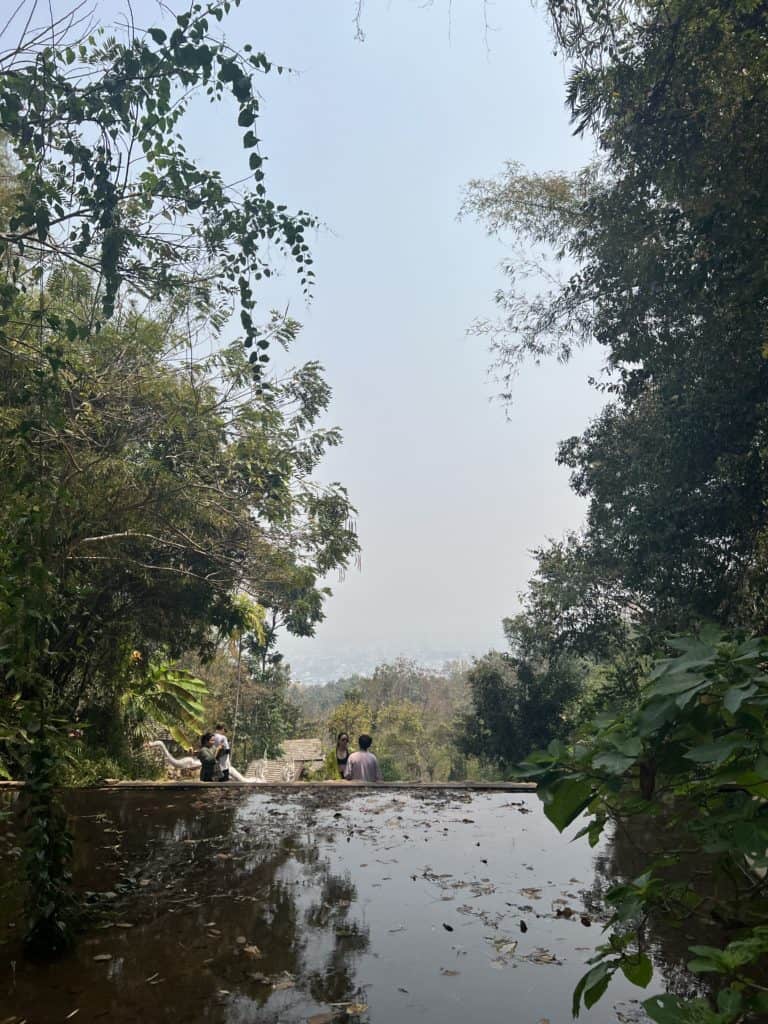
Pingback: Chiang Rai Thailand Guide: The Best 3 Places You Must Visit